At NY's northern border, asylum seekers find hope in desperation at a rural mini mart
Note: Translation for this story was done by Tone Translate in Utica, New York.
At 5 a.m., the girls tried to get to sleep on pebbled rocks under Mountain Mart’s awning.
It was in the low 40s and drizzling in Plattsburgh, a remote New York town a few miles from the Canadian border. They wore only pajamas and sandals with socks, huddling together under quilted blankets. A 9-month-old baby was tucked underneath.
Yermain Piñango, 37, stood at the curb looking at the country road. Hours earlier, he, his pregnant wife, their sister-in-law and a few others took an overnight bus from Manhattan, where they were staying in crowded hotels and shelters with thousands of other asylum seekers.
The bus dropped them off at the Plattsburgh bus station, a waypoint for many others seeking to cross into Canada. Now, as the dawn light emerged, they needed a taxi to get to the border, about 20 minutes away.
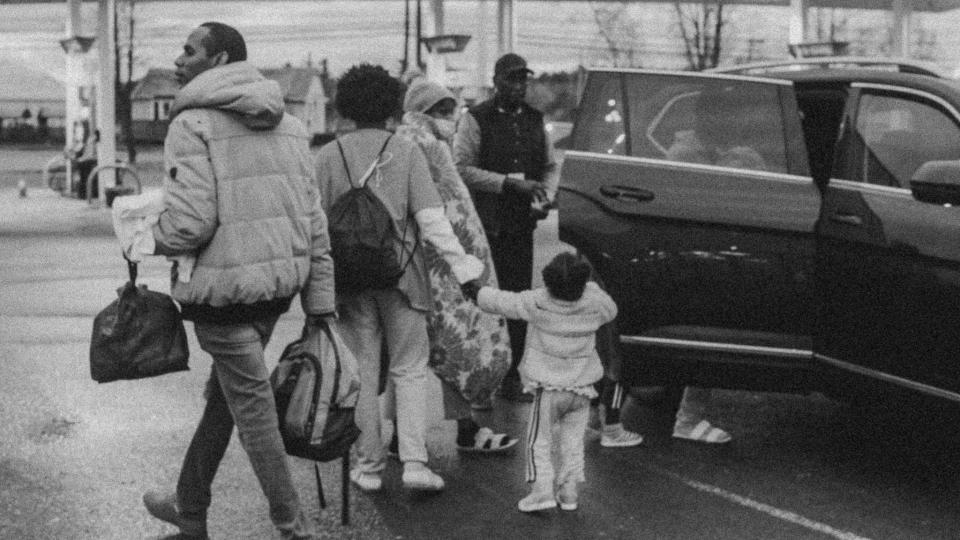
A few minutes later, the taxi arrived. It would cost $100 to take the group of seven, the driver, who only identified himself as Abdul, told them in broken Spanish. Piñango only had $80, and they called his wife’s sister — believed to be in Montreal — to send them the remaining $20.
They likely couldn’t get across, said Abdul, who had an unlit stogie in his mouth. Abdul woke up after driving someone to New York City from the border. If Piñango’s family wouldn’t go, Abdul would go back to sleep.
Piñango wanted to try.
“We want to go because we don’t know,” he said in Spanish. “Here, we won’t know anything until we get there."
A broken U.S. immigration system, backlogged for years to get a court hearing or work authorization, has pushed many asylum seekers to seek their vision of a new life elsewhere. Compared to the U.S., Canada has become a place where migrants aspire to go, for perceptions of it being more welcoming and offering a smoother path to work authorization and, eventually, citizenship.
For years, a loophole in immigration policy allowed people to claim asylum in Canada at a remote unofficial entry in Upstate New York called Roxham Road. Migrants streamed across by the thousands.
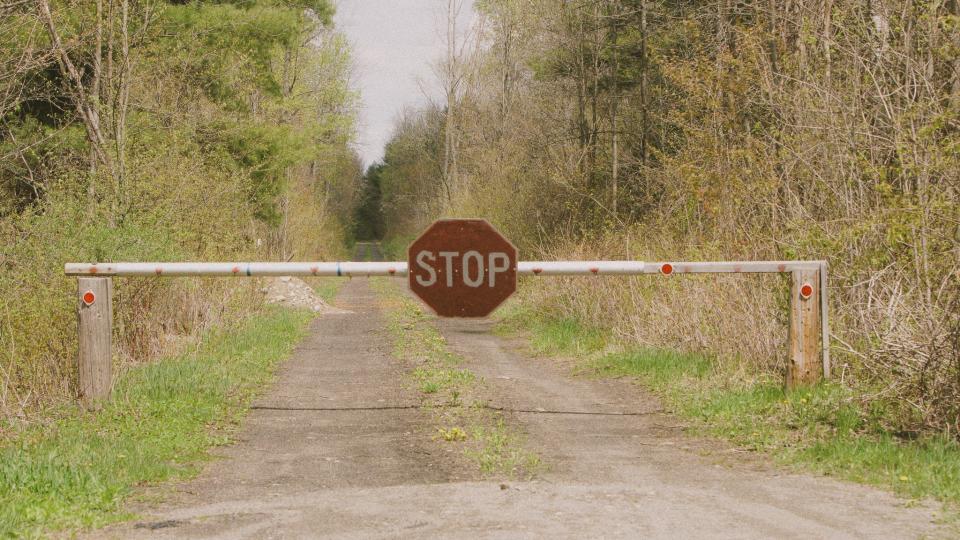
But the crossing at Roxham Road was shut down amid recent foreign policy changes intended to limit immigration between Canada and the U.S. Now, nearly anyone trying to cross into Canada would be turned back.
The change left Canada-bound asylum seekers in limbo, stranding some in rural Plattsburgh.
The drive from the Mountain Mart to the Canadian border was the last piece of Piñango's journey. To get to the border, migrants need to stop at Plattsburgh’s Mountain Mart on a charter bus. The gas station on Route 9 has a Dunkin’. Lottery tickets are scattered throughout the parking lot.
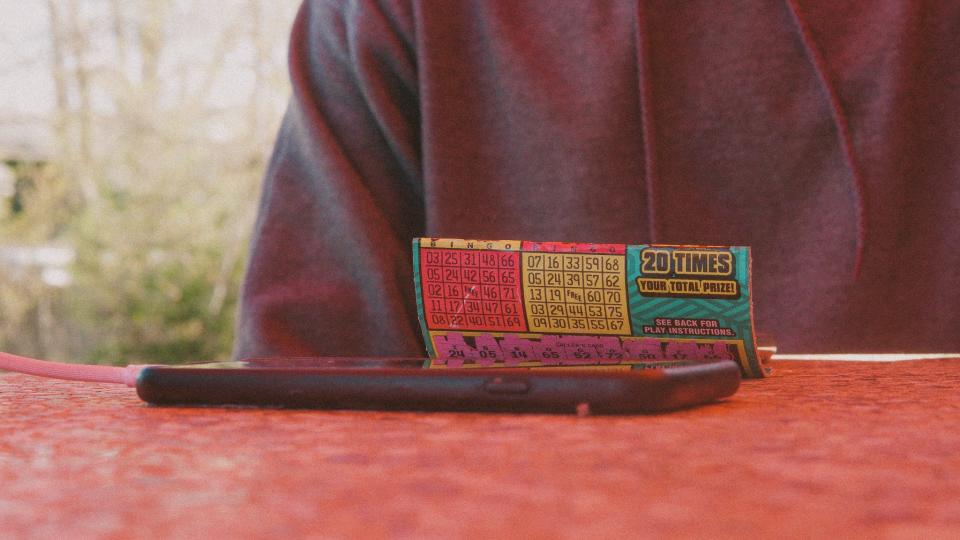
Gas station staff have said they have considered buying translation apps and taking Spanish classes to communicate with customers. Others handed out candy for children who often have to wait hours for buses.
Piñango, a taxi driver like Abdul, left behind three children in Venezuela. He walked through seven countries. He crossed the Darien Gap, a jungled no man’s land between Colombia and Panama that’s become infamous for thousands of migrants crossing, often perilously, en route to the U.S. He arrived in El Paso. He presented himself to authorities for asylum.
In September, he was bused, along with thousands of Venezuelans, from the Texas border to New York City, where the city has seen an influx of asylum seekers. Piñango landed in a shelter, he said. He was then placed in a hotel, alone. His wife went to a separate shelter.
Piñango’s hearing in front of a U.S. judge to present his case wasn’t until 2026, he said. He didn’t have work authorization, and he’d heard Canada was better.
A nonprofit or foundation, he said, arranged their tickets, but told them they couldn’t cross. They decided to take the overnight bus to the Plattsburgh gas station anyway.
At Mountain Mart, Piñango told Abdul he thought his wife’s sister was a permanent Canadian resident. Abdul questioned that.
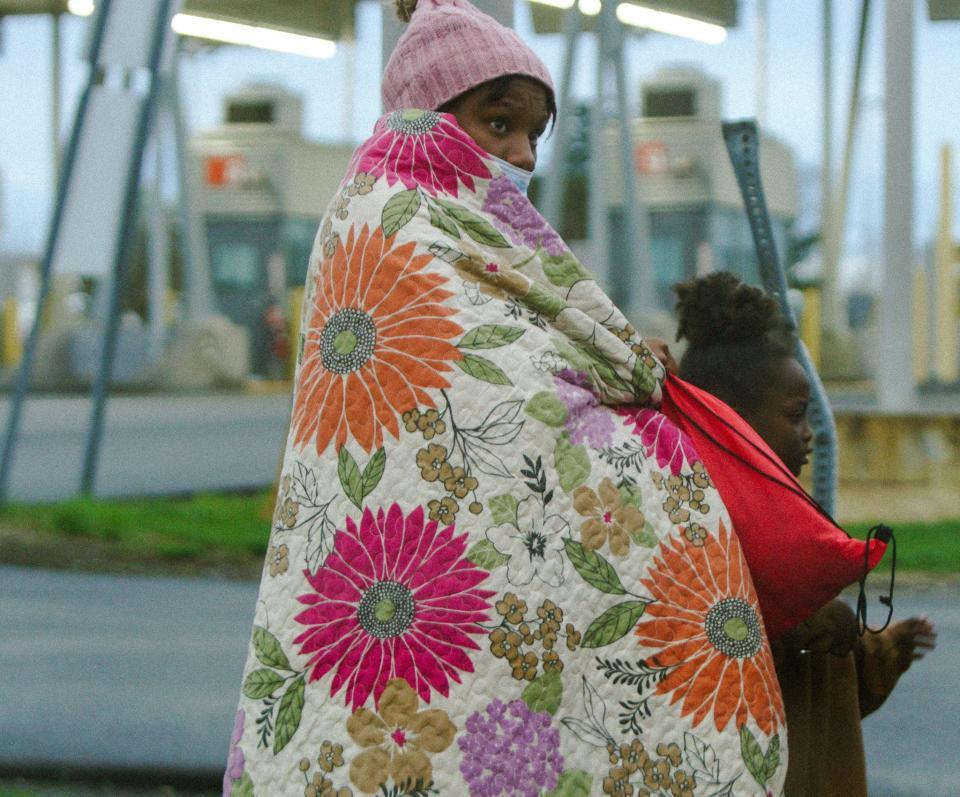
“I understand his point,” Abdul said, asking where Piñango came from, Venezuela. “He came from Venezuela all the way down here, and a taxi driver told him, ‘No, you cannot go to Canada.’ It’s hard to absorb, right?”
Finally, Abdul relented. He told them he could take them, right then, for $80 — all the money Piñango had. Piñango rushed to get the women and girls, who were trying to rest in plastic booths inside the gas station that had finally opened for the morning.
The women and girls, some of whom came from Colombia, crammed in the back of Abdul’s Volkswagen SUV. Piñango sat in front.
Abdul sped more than 90 miles per hour on the freeway. The next bus of migrants would arrive any minute, bringing more people who also wanted to try their luck. That meant more work for Abdul and other drivers.
They drove by farms and forests that define New York's North Country region. Then, the border patrol checkpoints appeared in the cloudy dawn.
A few hundred feet from the border, Abdul stopped on the side of the freeway, near a gap in the median barrier where a sign was posted prohibiting U-turns. He opened the door and told the girls to get out. They had to walk the rest of the way.
A little girl, no more than 5, dropped a white stuffed animal on the road. The family quickly stuffed it in a drawstring bag and walked north. Abdul turned back and went to the Mountain Mart, which would soon have more migrants arriving. Piñango grabbed a couple small bags containing all of their possessions.
Small ditch marks border where asylum seekers make crucial choice
Just off North Star Road, a narrow roadway surrounded by forest and a few ranches and farms leads to Canada from the U.S.
The Quebec and New York sides of Roxham Road are nearly indistinguishable aside from a small ditch that breaks up the international border. There's a trailer parked on the Canadian side, surrounded by fencing.
Roxham Road was an unofficial entry point into Canada for years. Migrants seeking a better life from parts of Africa, Asia and Latin America knew this road perhaps better than New York’s Fifth Avenue or Pennsylvania Avenue. Successive U.S. presidents have changed foreign policy governing Roxham Road from the White House, over 500 miles away.
Migrants were even more familiar with Roxham Road during the Trump administration, when the U.S. government took a hardline approach on immigration, including seeking to limit asylum claims. So they turned elsewhere, to Canada.
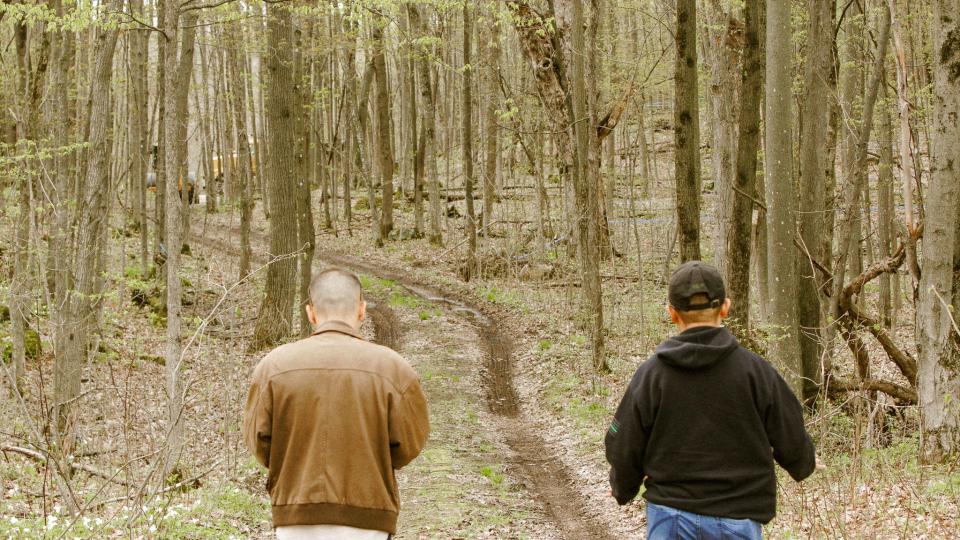
For years, migrants in the U.S. and Canada have had to seek asylum in the first safe country they set foot in, either in the U.S. or Canada, under a 2004 deal between the two countries. Called the Safe Third Country Agreement, it had few exemptions, meaning either country could turn people back to that first safe country.
There was a loophole, though: The agreement only applied to ports of entry along the 5,500-mile border between the two countries — not irregular areas, like Roxham Road.
YouTube, Facebook and TikTok videos instructed people on where to cross, how they would be detained by Canadian officials and what they needed to say for their claim. Thousands of people have tried this route, after finding conditions in the U.S. unsustainable.
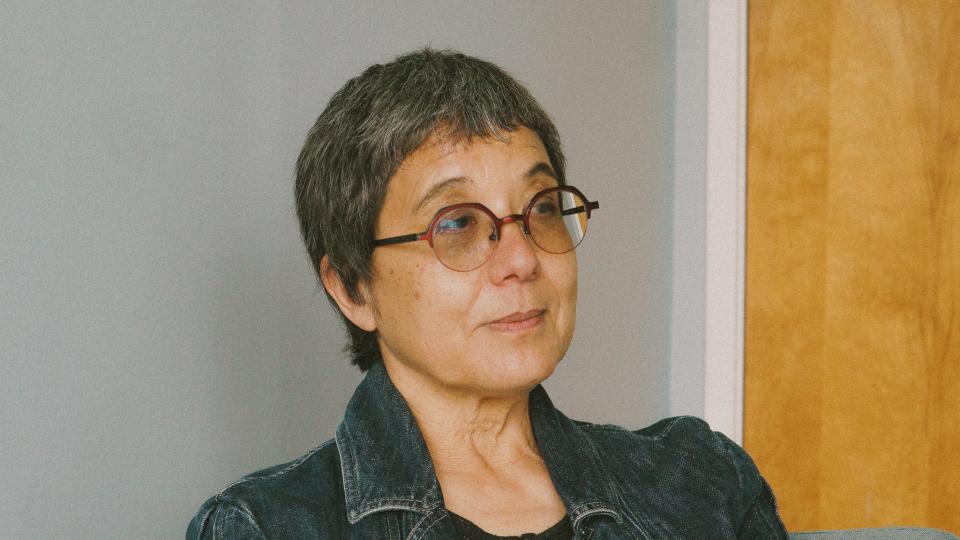
“Canada is a place that occupies people’s imagination now. It used to be the U.S.,” said Amy Mountcastle, who has studied Roxham Road and is an associate professor of anthropology at the nearby State University of New York, Plattsburgh.
“People are dazzled by the idea of Canada,” she said. “It’s a beautiful country. They’re really nice to people. They take care.”
At 12:01 a.m. on March 25, Canadian officials changed signage to announce Roxham Road’s closure. In the hours and even minutes before, hundreds of people rushed to cross the ditch into Quebec, often unsuccessfully.
The day prior, in Ottawa, President Joe Biden and Prime Minister Justin Trudeau announced they would close off irregular entry points and restrict asylum claims even more. Under the new Safe Third Country Agreement, migrants have to present themselves at regular ports of entry, with few exceptions allowing them to enter. A direct family member, such as a sibling, parent or spouse with legal status in Canada, is one of those exceptions.
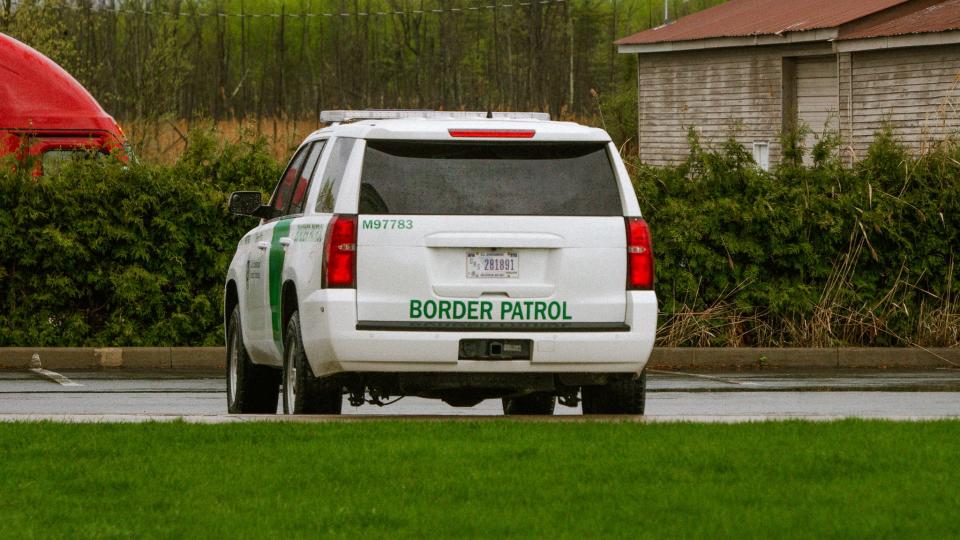
“It is illegal to enter between ports of entry and it is not safe,” Maria Ladouceur, a spokesperson for the Canada Border Services Agency, said in an email. “We encourage asylum seekers to cross the border at designated ports of entry. The Safe Third Country Agreement (SCTA) now applies to the entire land border.”
In 2022, Canadian authorities apprehended over 39,000 people seeking asylum between ports of entry, nearly all into Quebec. Between January and March 2023, Quebec averaged more than 4,000 irregular crossings. Most, experts have said, went through Roxham Road.
Since the updated agreement took effect, the numbers entering Canada have sharply decreased. Through May 11, 546 cases of people crossing between designated ports of entry have been processed. Slightly less than half of claimants have been returned to the U.S. under the agreement, while officials deemed 224 eligible to make a claim in Canada, the Border Services Agency said.
The Supreme Court of Canada had considered whether the agreement with the U.S. violated the Canadian Charter of Rights and Freedoms. Because Canadian officials can turn back migrants to the U.S. as a "safe country," the high court decided whether American restrictions on asylum, as well as conditions in immigration detention centers where asylum seekers are often placed, violated international and Canadian laws.
On June 16, the Canadian high court ruled “the regulations designating the United States as a safe third country do not infringe refugee claimants’ rights to liberty and security.” The court left open another challenge to the agreement on asylum seekers fleeing gender-based persecution, which the U.S. has traditionally not recognized.
Under the new agreement, there’s another loophole: If someone crosses the border irregularly, hides and manages to live for two weeks without being detected, they can make an asylum claim without being sent back. This, however, raises questions on how someone shows they had been in the country that long, said Kristine Plouffe-Malette, an adjunct professor at the University of Sherbrooke, in Canada, where she specializes in human rights and refugee law. It also opens more prospects of human trafficking, a common concern along the U.S.-Mexico border, though not as prevalent on the northern border with Canada.
“There are always more migrants who try to cross the border in summer,” she wrote in an email. “So, the next few months could tell us more about the risks involved in renegotiating the Safe Third Country Agreement.”
New York City looks to place migrants elsewhere
The trek to Canada often started at the Port Authority Bus Terminal in Midtown Manhattan, about six hours from Plattsburgh. A few minutes’ walk down an escalator, Gate 26 offers daily Greyhound buses to Montreal. Asylum seekers opt for the last stop before Canada, in Plattsburgh, to get to the border.
They're not alone — in recent months, New York City has been a bustling haven for asylum seekers arriving from all over the world.
For more than a year, migrants, including hundreds of thousands of Venezuelans, have fled their countries in search of better opportunities in the U.S. and Canada. The United Nations estimates 20% of Venezuelans have fled their country, with 5,000 people leaving per day, due to political and economic turmoil in recent years.
Many of them gathered at ports of entry along the U.S.-Mexico border, waiting for their opportunity to claim asylum.
If they make it onto a bus to New York City, they are processed in a makeshift staging area barricaded off with plastic tables and seats, with National Guard troops, city staff and community organizations helping people find food, shelter and clothes.
Others came to New York City on airplanes, or via charter buses sent from Republican states like Texas or Florida. In May, the city moved its processing center to Midtown’s Roosevelt Hotel.
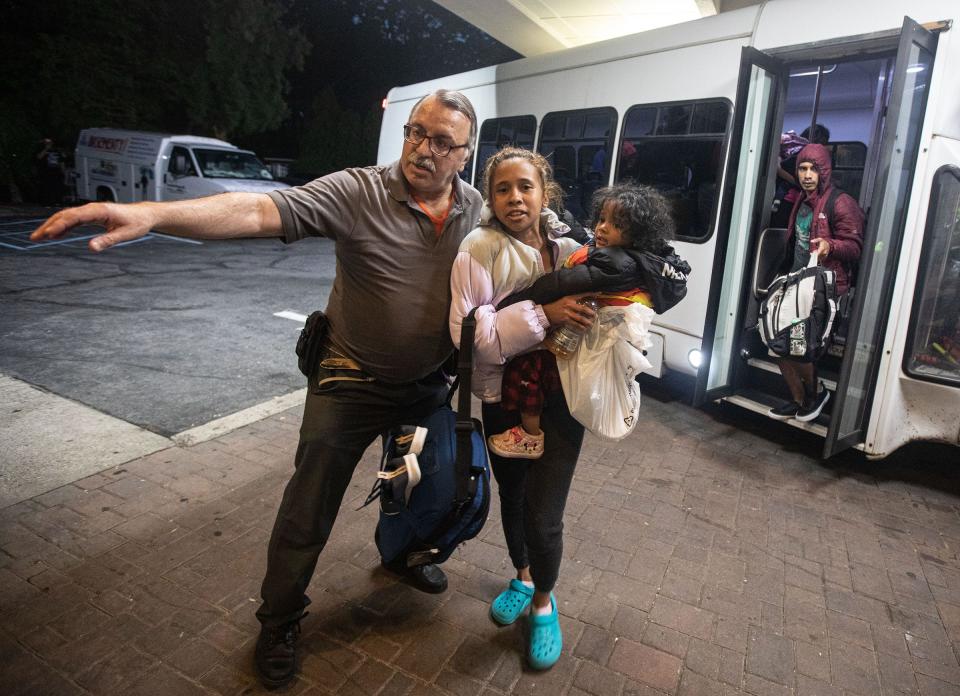
In total, over 70,000 migrants have arrived in New York City in the last year, and more than half of those are in New York City care, living in hotels and shelters.
The city sought to move migrants elsewhere, into the New York City suburbs and Upstate New York, prompting several smaller counties to enact emergency orders seeking to block the city from doing so.
For months, reports suggested New York City intentionally bused people to Canada, which Mayor Eric Adams has denied.
In an email, New York City Hall officials reiterated that the city hasn’t sent anyone to Canada. Some work to procure tickets, to send migrants to a chosen destination, is done by nonprofits.
“New York City continues to care for more recently arrived asylum seekers than any other city in the nation, and our leadership shouldn't replace a national coordination strategy that is sorely needed,” city officials said.
Power Malu, an organizer with the advocacy group Artists Athletes and Activists, has worked to welcome and settle asylum seekers arriving at the Port Authority. Often, he said this is done without coordination from city government, or from southern border states, many of which, such as Texas and its governor, Greg Abbott, placed people on charter buses without telling them where they were headed.
Asylum seekers are then placed in city care — often in hotels without kitchens — with no sign of work authorization, which takes at least six months. Many jump at an opportunity for a better life in Canada, Malu said.
Yet they might not know about the changes in the agreement between the U.S. and Canada. Organizers see many people return.
“You’re doing the same thing that Abbott is doing,” Malu said. “You should at least give them the right information.”
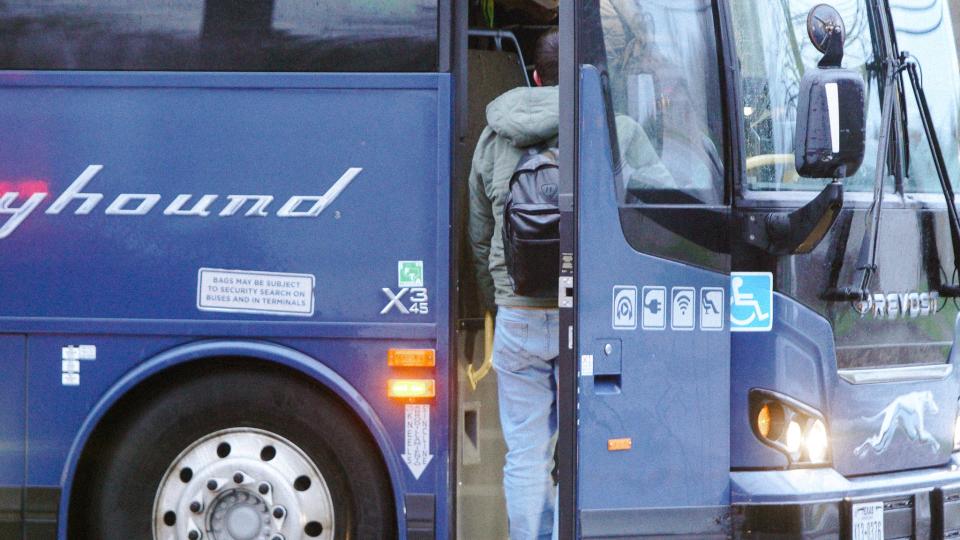
Rural NY town points to 'failure' of feds to act on migrant crisis
Amid the influx, New York officials briefly considered using the SUNY campus in the city of Plattsburgh to house migrants, along with other SUNY schools. While this plan was ultimately canned, faculty and students have considered ways to help shelter migrants and get them legal resources, especially when Canadian officials return them to Plattsburgh.
The town of Plattsburgh surrounds the city, and people living in the outer ring tend to be more conservative than those inside city borders. The town’s land is agricultural. Mountain Mart sits in town limits.
Town Supervisor Michael Cashman, a Democrat, has seen many migrants en route to Canada pass through his community of less than 12,000 people. He called the new agreement an emergency waiting to happen.
“This was a failure of the U.S. and Canadian governments to have a more dynamic and well thought-out plan,” he said in an interview at his office.
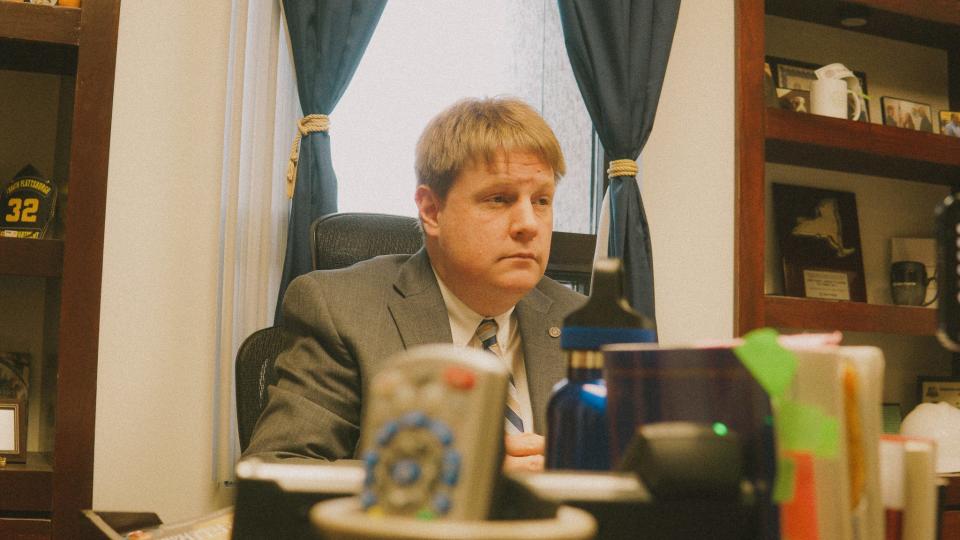
For example, now that seeking asylum is severely limited, many migrants might take more dangerous approaches to cross into either country. Cashman worried about someone crossing into “Farmer Fred’s Field.”
Farmer Fred, in Cashman’s fable, could see migrants crossing his agricultural fields along the border at night and fire his gun at them. In the rural North Country, many residents own firearms.
There have been reports of deaths of people trying to cross since the agreement. In late March, officials found the bodies of eight Indian and Romanian people, including two children, who paid smugglers to cross them into the U.S. by boat across the St. Lawrence River, near Akwesasne, a Kanien’keha:ka, or Mohawk, First Nations territory that straddles the border. Their boat capsized and the migrants aboard drowned.
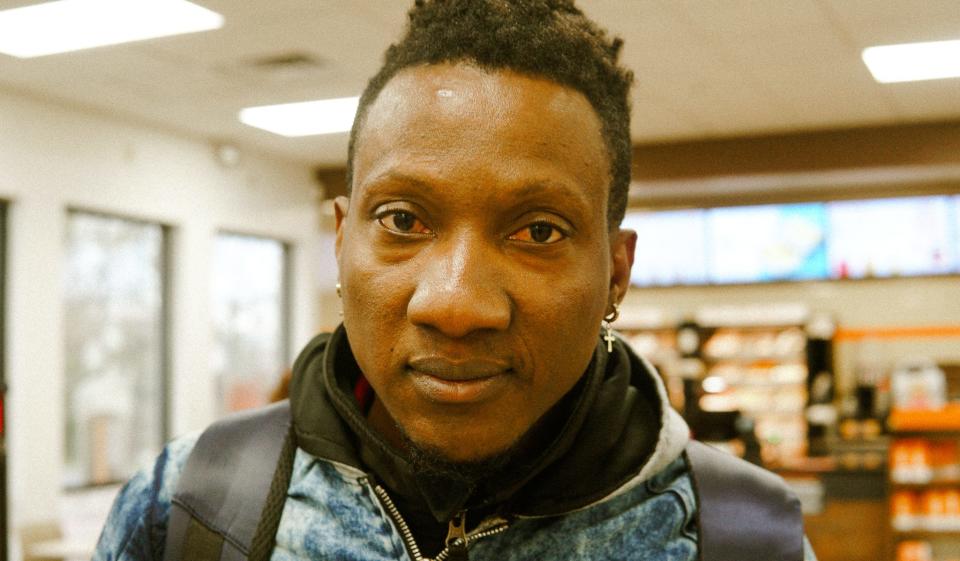
Turned away from border, asylum seekers make desperate plans
On a rainy Wednesday in May at the Mountain Mart, two young men from Uzbekistan drank Monster energy drinks and took turns smoking cigarettes outside the store after being turned away by Canadian officials. They wondered what to do with the paperwork handed to them by officials, written in English, which they couldn’t read.
Via Google Translate, they said they fled their country because they’re Muslim and feared religious persecution by the Uzbek government, which the nongovernmental organization Human Rights Watch said has restricted religious freedoms.
One of the men asked, via written translation from Uzbek, how they could cross through the forest into Canada.
At the border, Canadian officials apprehended Piñango and his family, who had just tumbled out of Abdul's taxi cab. He and his wife’s sister-in-law were handed over to American officials, he said in a WhatsApp audio message. His wife, pregnant with their son, made her way to her sister in Canada.
Piñango found himself back at the same hotel in Midtown. This time, he had 15 days in early May to appeal his decision. Piñango needed a Canadian attorney to do so, though he was only given the number for a refugee shelter organization in Buffalo. His calls only went to voicemail, he said.
“I don’t know what to do,” he said over WhatsApp.
He wasn’t alone.
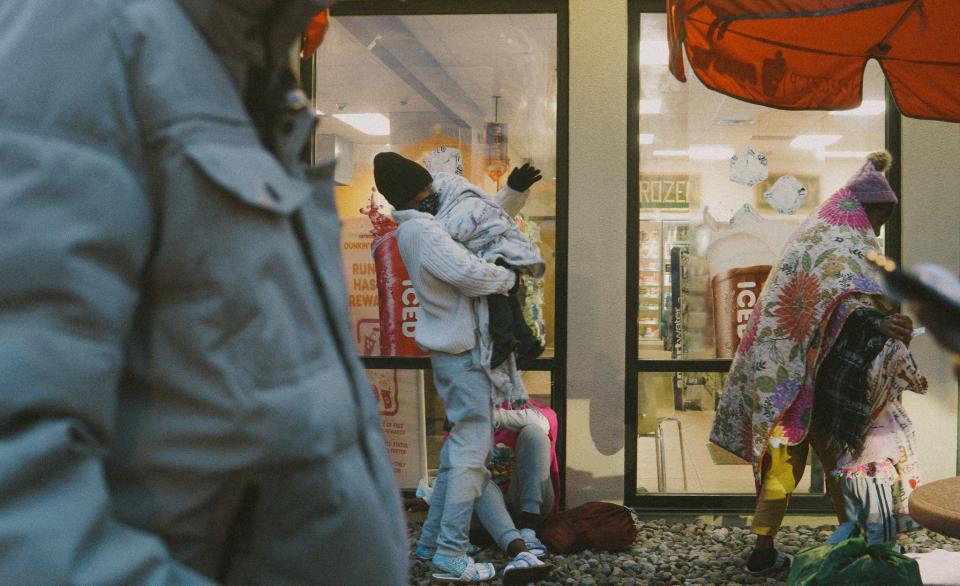
Black, brown asylum seekers seen differently
More than a month after the agreement’s update, Wendy Ayotte, a longtime organizer of the Canadian aid group Bridges Not Borders, crossed from Quebec to New York and went around the Mountain Mart seeking out people who looked lost. She helped find temporary lodging for an Afghan family of four who said they had a sister with permanent residency in Hamilton, Canada, which would theoretically allow them to enter — but the family had been turned away.
Ayotte said immigration officials often make decisions on a whim.
“We know that this happens regularly that people do have the right family members, but are excluded,“ she said. “Most people will just disappear into the woodwork.”
Ayotte saw the disparity in treatment of people of color seeking asylum versus Ukrainians fleeing Russia’s invasion of their European country. Canada, for example, welcomed some 170,000 Ukrainians to the country on special visas. The updated agreement heavily restricts people from Africa and Asia, and the Canadian government agreed to accept some 15,000 people from the Western Hemisphere, including Haiti and Venezuela.
“The government is making a racialized preferential choice as to who they desire — who is the desirable refugees and who are not,” she said inside the Mountain Mart, sitting next to the Afghan family.
Outside of the Mountain Mart, a woman from the Democratic Republic of Congo, with a large suitcase in tow, tried to call family. She tried to enter Canada at Roxham Road, only to find out it had been closed. After some time waiting, the Congolese woman rolled her suitcase down the country road.
For subscribers: 'Guilty until proven innocent'? Advocates say Black immigrants face racial bias in court
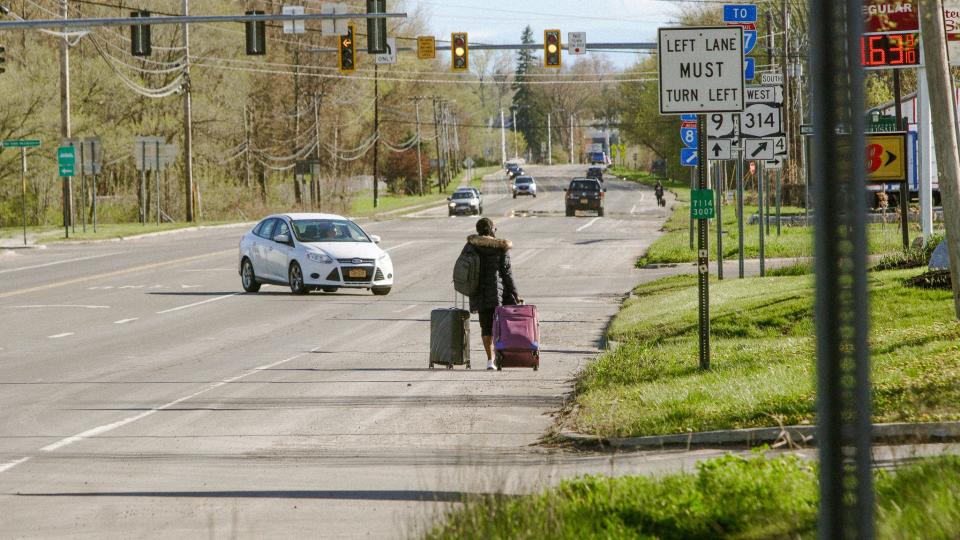
Memories of harrowing journey fuel search for home
On a recent Friday afternoon, Jesus Enrique, 25, rested his head on a table underneath an umbrella at Mountain Mart. It was the first sleep he’d gotten in days after trekking from his refugee housing near Niagara Falls, on the Canadian side, to New York.
Months earlier, on Feb. 19, he’d gone to Plattsburgh with his brother Rafael, 28, where they crossed into Canada at Roxham Road, before the closure. That Friday, they returned to the border, this time going back to the U.S. via the official port of entry. U.S. officials detained them for a couple hours before paroling them.
The USA Today Network is only using the brothers' first names due to their fear of retaliation related to their past immigration status in the U.S.
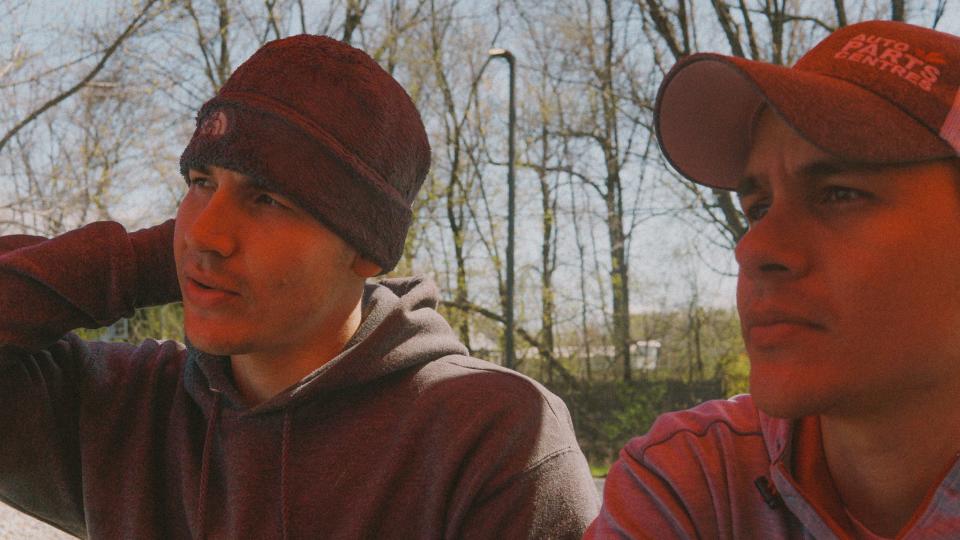
Originally from Venezuela, they fled their country more than seven years ago. They operated a food stand after dropping out of school as teenagers, selling Venezuelan hamburgers and hot dogs. But they left their country as it became more dangerous, and poverty became more severe. First, they went to Colombia, where Rafael had a son, who is now 4.
Then they crossed the Darien Gap, the dangerous jungle trek where many die. Eventually, they arrived in Mexico, where they were kidnapped. Jesus Enrique remembered drug traffickers telling him and other migrants not to lift their heads, only to give them their documents. He could see the barrels of the traffickers’ guns.
The brothers heard life was easier in Canada. After spending months in the U.S. illegally, at points getting under-the-table wages stolen, they opted to try northward. But they couldn’t get work authorization while waiting for asylum. The housing where they lived didn’t have internet access, so they struggled to learn English or French. They decided to leave Canada.
At Mountain Mart, they missed the 2 p.m. bus. Local volunteers helped arrange bus tickets for the next bus, five hours later. They could rest until then, taking turns sitting out in the spring sunshine, or lounging in the Mountain Mart’s booths, like other migrants in transit.
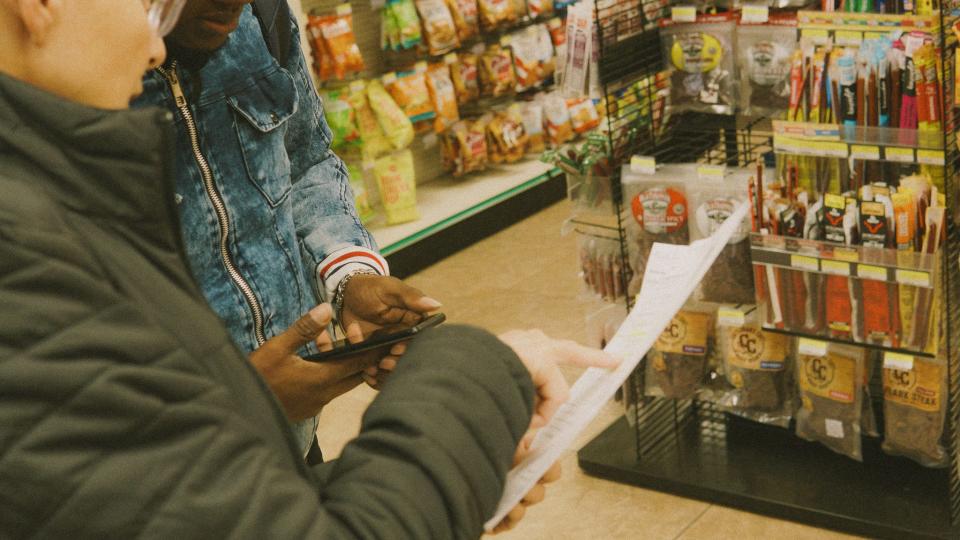
Jesus Enrique remembered being in the Darien Gap. A Black woman, who spoke a language they didn’t know, couldn’t move as migrants passed her on the trail. Jesus Enrique and his brother had already seen dead bodies on the dangerous trek. They thought the lady might face the same fate.
For subscribers: As Florida law sparks immigration protests, Trump, other businesses bid for foreign workers
They handed her a piece of panelon, a sugarcane sweet, along with a pill for her pain and water, Jesus Enrique said. Soon after, the woman rose and started walking. The brothers met her again and she thanked them for giving her strength.
“You don’t know what a grain can do for a person in that moment,” Jesus Enrique said. "It's like us."
On the day they entered the U.S. and waited at Mountain Mart, Rafael’s wife and 4-year-old son entered the U.S. in El Paso on asylum claims. He wondered how long it would take them to get to Chicago. The family would reunite there.
As the sun set, Jesus Enrique and Rafael boarded the Greyhound bus, along with a few others — among them other Venezuelans, Colombians, Zambians and Congolese — who Canada turned away. The brothers sat in the back, together.
After six hours, they'd reach the Port Authority Bus Terminal in New York. Nearby in Manhattan, Piñango would find out he'd have to wait a year to try to enter Canada under the country’s immigration laws. His child would be born by then. He’d work in the meantime, with hopes to eventually rejoin them.
Contact Robert Bell at: rlbell@gannett.com. Follow him on Twitter: @byrobbell & Instagram: @byrobbell.
Eduardo Cuevas covers race and justice for the USA TODAY Network of New York. He can be reached at EMCuevas1@gannett.com and followed on Twitter @eduardomcuevas.
This article originally appeared on USA TODAY NETWORK: At NY's Canadian border, asylum seekers find hope at a rural mini mart

